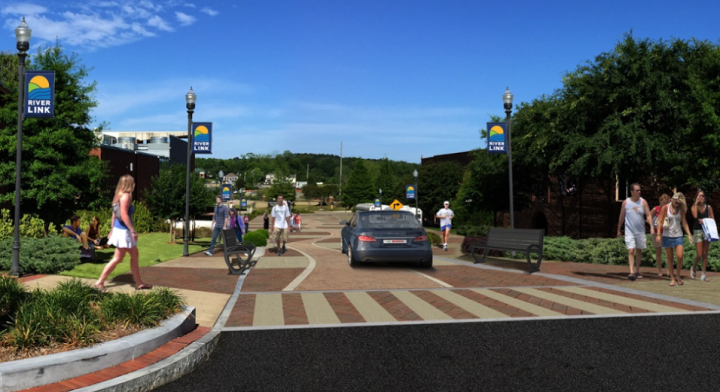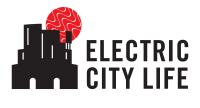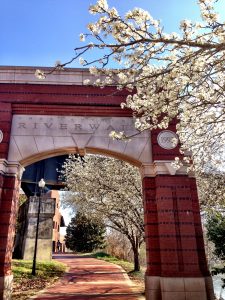
Written by Scott Berson
Americans want a new idea of the city. Downtowns are choked with cars and taxis, seas of parking lots and strip malls. Trees, parks, and even people are shoved to the periphery, making way for trucks, garages, and office plazas.
Citizens have lived this, grimaced, and have now decided it’s not what they want anymore.
Americans (especially younger ones) want to get around without a car, to meet other people outside, spontaneously; and feel like they can be part of the community, rather than migrants, grimly hoping to navigate through the chaos from work and back.
Columbus saw this type of change coming years ago, and the progress, overall in that direction, has been remarkable. Revitalization and investment is at an all-time high, and certainly doesn’t seem to be slowing down.
We have wonderful new restaurants, businesses arriving every few months, and a community that shows up every day to support them. In order to keep that momentum going, Columbus needs to completely embrace the idea of the new city: the walkable, community-oriented city.
Columbus already has about 26 miles of mixed use trails. The beautiful 14 mile RiverWalk connects neighborhoods, parks, businesses, attractions, and people all along a wonderfully designed riverfront trail, which thousands use every week.
The Fall Line Trace, built atop an abandoned railroad line in 2010, provides an artery from the vibrant downtown. It runs straight into the heart of the city towards more parks, the university, and various businesses and neighborhoods. I use it almost every day, going to work and school.
The Minimum Grid project was announced earlier in 2015 as a mixed use trail system (which will include cars) to connect the people and neighborhoods of MidTown. Construction began in June on the South Lumpkin Road Trail (official name pending) in South Columbus.
We are moving forward in designing a true, walkable city. We are on the right path. Now, the opportunity has come to think bigger.
The Friends of the Columbus Greenway Trail Committee at the Community Foundation, in partnership with the nonprofit PATH foundation (perhaps most famous for designing the Atlanta Beltline and Silver Comet Trail), have stated their desire to more than double the mileage of trails in Columbus by adding 27.5 miles of new, mixed-use paths all throughout the city.
At the public unveiling of the proposal, some 60 interested citizens listened as PATH executive director, Ed McBrayer, detailed the plans for the new system, which has been given the tentative name, “Riverlink.”
The system focuses on connecting certain “missing links” throughout the city to each other, and ultimately to the RiverWalk, which is seen as the crowning point of the trail system. McBrayer presented twelve different “links” that need to be built to create a true “intercity trail network”.
The most important link, McBrayer said, was connecting the Fall Line Trace with the RiverWalk. Presently, the trail ends at MidTown Medical Center and becomes a bike route where cyclists share the road with motorists. The problem with that, says McBrayer, is that it prevents people who aren’t on bikes, or aren’t comfortable on the roads, from following the trail downtown and to the river. “People just don’t feel safe crossing that intersection,” he said.
McBrayer proposed adding a true traffic signal at the intersection between the hospital and 10th Avenue, and then widening the sidewalk to create a true mixed-use trail that connects the Fall Line Trace directly to the RiverWalk. This will eliminate the danger of tangling with motorists. “If you’re going to fix any of the missing links, this is the one to fix,” he said. “These two trails need to be connected.”
Among the proposed links is a connection between downtown and Lakebottom/Wildwood Parks, a new RiverWalk entranceway with a plaza on 10th street for better direction to bikers,
a corridor along Martin Luther King Jr. Boulevard,
a vision for the City Mills area, and a more intact RiverWalk.
The cost of these new trails hasn’t been determined yet, as the project is in a conceptual stage; but, Attorney Ken Henson, a member of the committee, says he is convinced the money can be found if the public decides they really want these trails. McBrayer (pictured below) hopes to have an official proposal to submit to the city in the coming months, and has hopes to complete the project within five years.
It should not be misunderstood how important these trails can be. Having a trail nearby draws businesses and increases property values, virtually without exception. As a worker in the tourism industry in Columbus, I can promise that when visitors from out of town see our RiverWalk and our trail system, they fall in love. They want to come back, and they want to stay here longer. Investments like these are more than eye candy or vanity projects. They have real, tangible, and almost universally, beneficial effects on quality of life. They bring business, visitors, and events to town. To become the new, modern city, we must embrace these types of projects. Whatever we put in, they will give back ten times over.
Pictures provided by PATH









Yes! This is absolutely crucial to the health of this city and the standard of living of its occupants.
I can’t agree more … visitors here LOVE the walking trail network, the segway, bike, skate, and hike opportunities, all with zero cost.
Your posting is abuslotely on the point!